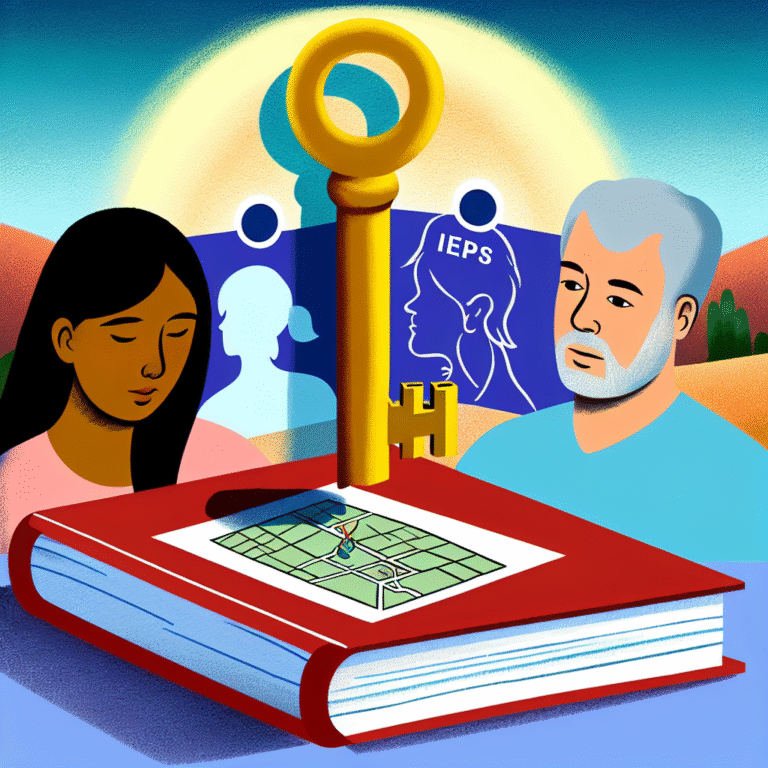Inclusivity in Action: Employers Embracing Diversity in Hiring Those with Learning Disabilities
Introduction
In today’s rapidly evolving workplace, the call for diversity and inclusivity has reached a powerful crescendo. While organizations increasingly recognize the benefits of diverse teams, a vital yet often overlooked segment of this diversity comprises individuals with learning disabilities. Inclusivity in Action: Employers Embracing Diversity in Hiring Those with Learning Disabilities is not just a social imperative; it’s a strategic advantage that enriches company culture and drives innovation. This article explores how inclusive hiring practices not only create more equitable environments but also bolster business performance.
The Imperative for Inclusivity
As of recent statistics, approximately 1 in 5 individuals in the U.S. has a learning disability. This represents a significant portion of the population capable of contributing unique perspectives and skills to the workforce. Despite this, many employers hesitate or fail to actively embrace diversity in hiring practices. Why is this? Misconceptions and misinformation about learning disabilities often lead to unfounded bias in recruitment processes. Addressing these issues head-on is essential for fostering a truly inclusive workplace.
Understanding Learning Disabilities
What Are Learning Disabilities?
Learning disabilities are neurological conditions that affect the way individuals process information. Common types include:
- Dyslexia: Difficulty with reading and language processing.
- Dyscalculia: Challenges with math and number-related concepts.
- Dysgraphia: Impairments related to writing and fine motor skills.
- ADHD: Attention Deficit Hyperactivity Disorder can also be classified under learning disabilities, impacting focus and organization.
These conditions can vary widely in severity and do not reflect an individual’s intelligence or capability. It’s critical for employers to understand that potential employees with learning disabilities can offer valuable skills, creativity, and resilience that different perspectives bring to a team.
The Business Case for Diversity
To illustrate the importance of inclusivity, consider a landmark study by McKinsey & Company, which showed that companies with higher diversity in their leadership teams are 21% more likely to outperform their peers on profitability. Furthermore, companies that embrace diversity consistently outperform their competitors, not just in profits but also in innovation and employee satisfaction.
Key Strategies for Inclusive Hiring
1. Crafting Accessible Job Descriptions
When creating job postings, it’s essential to use clear, straightforward language that avoids jargon. This makes the vacancies accessible to a wider audience, including individuals with learning disabilities who may struggle with complex language.
Example Table: Best Practices for Job Descriptions
| Strategy | Description |
|---|---|
| Clear Language | Use simple, direct terms. |
| No Jargon | Avoid industry-specific language that may confuse. |
| Inclusive Language | Use "we" and "you" to create a welcoming tone. |
2. Offering Flexible Application Processes
Employers can adopt flexible application processes that allow candidates to demonstrate their skills in ways that suit them best. For example, providing alternatives to traditional resumes, such as portfolios or demonstrations of work, can help candidates showcase their strengths effectively.
3. Training for Hiring Managers
It’s vital to equip hiring managers with training focused on understanding and eliminating biases in the hiring process. This includes recognizing their preconceptions and learning how to evaluate candidates fairly and inclusively.
4. Creating Supportive Interview Environments
An inclusive interview process can include accommodations such as extended time for interviews, quiet spaces, and alternative formats for questions. This creates a level playing field where all candidates can shine.
Case Studies
Case Study 1: Microsoft’s Neurodiversity Hiring Program
Microsoft launched its Neurodiversity Hiring Program, specifically designed to attract talent with autism and other learning differences. This initiative has been a resounding success, resulting in increased innovation and a richer workplace culture. Microsoft has reported enhanced problem-solving skills and unique perspectives brought by neurodiverse employees, reinforcing the Inclusivity in Action: Employers Embracing Diversity in Hiring Those with Learning Disabilities ethos.
Analysis: This case demonstrates how a structured program can lead to significant organizational improvements while providing individuals the opportunity to showcase their potential.
Case Study 2: SAP’s Autism at Work Initiative
SAP’s Autism at Work initiative aims to employ individuals on the autism spectrum across various roles. The company reports increased productivity and out-of-the-box thinking from neurodiverse teams. Through this initiative, SAP proves that Inclusivity in Action: Employers Embracing Diversity in Hiring Those with Learning Disabilities is not merely a social responsibility but a business strategy.
Analysis: SAP’s commitment to this initiative not only supports individuals with learning disabilities but illustrates how inclusive practices can transform organizational dynamics.
Case Study 3: EY’s Commitment to Diversity and Inclusion
Ernst & Young (EY) has committed to hiring individuals with learning disabilities as part of its inclusive hiring practices. With tailored support systems and mentorship programs, EY has successfully integrated neurodiverse talent into their workforce. Their efforts in Inclusivity in Action: Employers Embracing Diversity in Hiring Those with Learning Disabilities have led to increased employee satisfaction and retention rates.
Analysis: EY’s approach to mentorship and support sets a benchmark for other companies looking to create inclusive hiring strategies.
Overcoming Challenges
While the benefits of inclusivity are clear, challenges remain. Employer misconceptions regarding the capabilities of individuals with learning disabilities can create barriers that deter businesses from adopting inclusive hiring practices.
Common Misconceptions
Many employers hold the belief that individuals with learning disabilities may not cope well in fast-paced environments. However, studies reveal that with the right support, individuals can excel and significantly contribute to their teams. Education and awareness initiatives can be pivotal in dismantling these misconceptions.
Importance of Policy Frameworks
Implementing clear policies around diversity and inclusion is critical for setting the tone within an organization. This includes outlining clear guidelines on hiring practices and accommodations.
Conclusion
Inclusivity in Action: Employers Embracing Diversity in Hiring Those with Learning Disabilities isn’t merely a trend; it’s a profound shift toward recognizing and valuing the contributions of all individuals, regardless of their challenges. As businesses continue to navigate a complex global landscape, the importance of diverse teams equipped with varied perspectives has never been clearer.
The road to inclusivity may have its challenges, but the rewards—innovation, enhanced performance, and a thriving workplace culture—are invaluable. As stakeholders in the global economy, every small step toward inclusivity creates ripples that can transform lives and businesses alike.
Actionable Insights
- Assess Current Hiring Practices: Audit your current processes to identify areas for improvement.
- Initiate Training Programs: Start by training your team on inclusivity practices.
- Build Support Networks: Create mentorship programs or support systems to assist individuals as they transition into new roles.
FAQs
1. What are common learning disabilities that employers should be aware of?
Common learning disabilities include dyslexia, dyscalculia, ADHD, and dysgraphia. Each affects information processing differently, but they do not reflect a person’s intelligence.
2. How can employers provide accommodations for employees with learning disabilities?
Employers can offer accommodations such as flexible working hours, modified training programs, and tailored communication strategies.
3. Is hiring individuals with learning disabilities beneficial for company culture?
Yes, diverse teams that include individuals with learning disabilities often foster creativity, innovation, and deeper problem-solving capabilities.
4. What steps can organizations take to start an inclusive hiring program?
Organizations can begin by assessing their current hiring practices, providing training for managers, and creating clear, accessible job descriptions.
5. How do we measure the success of inclusivity initiatives?
Success can be measured through employee satisfaction surveys, retention rates, and overall business performance metrics such as productivity and innovation.
By committing to inclusivity and realizing the diverse potential within their teams, employers can create workplaces where everyone, including those with learning disabilities, can thrive.






